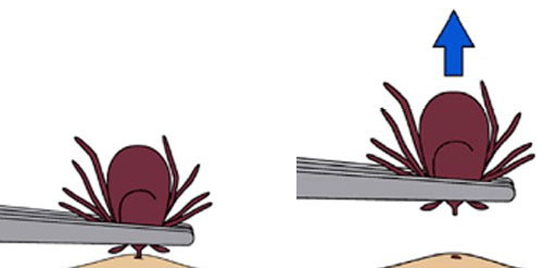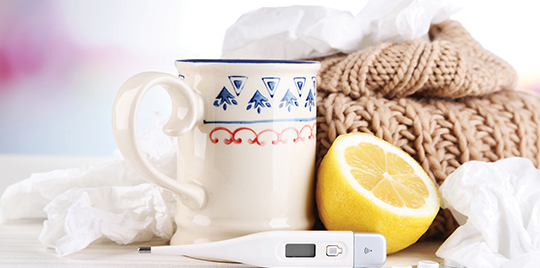Avoid Getting "Ticked" Off This Summer
June 29, 2017By: Mari Rydings
Categories: Live Healthy, Prevention, Your Wellness

 Growing up, I spent many summers at my Grandma Cornell’s house in Oronogo, MO, just outside of Joplin. From sun up to sun down, my cousins and I played tag in the tall grass and built forts in overgrown thickets.
Growing up, I spent many summers at my Grandma Cornell’s house in Oronogo, MO, just outside of Joplin. From sun up to sun down, my cousins and I played tag in the tall grass and built forts in overgrown thickets.
At the end of each day, Grandma conducted a thorough tick check that included scrutinizing my scalp; peering behind my ears; and scanning under my arms, around my waist and behind my knees. The rare offender was swiftly dealt with via tweezers and a hot match. Yes, Grandma went old school with her treatment plans.
Today’s Ticks
Earlier this year, healthcare professionals raised the red flag and predicted a busy tick season, thanks in part to the mild winters we’ve had in recent years. While the mere mention of the word “tick” can put the fear of Lyme disease into most of us, taking a few preventive steps each time you head outdoors can keep the little buggers from ruining your summer.
Defend Yourself
“Other than staying indoors, tick repellents are the best way to protect your family from ticks,” says Ashley E. Gemmell, DO, a family medicine physician with Meritas Health Briarcliff. “Look for products with DEET as the main ingredient, and get something in the 10%-30% range, which is what the Academy of Pediatrics recommends.” DEET is Environmental Protection Agency-approved for use on children and adults. Make sure to read and follow the directions before using.
Other preventive measures include:
- Applying permethrin (EPA approved) to clothes before heading outdoors
- Conducting the “Grandma Cornell” drill when you return from the great outdoors, leaving no body part left unchecked
- Throwing your outdoor clothes into the dryer, where the heat will kill any lingering ticks
- Taking a shower using a washcloth and soap to dislodge any ticks, which take a while to attach to skin
- Using tick collars with any pets that play outdoors to protect them and prevent them from bringing ticks into the house
Tick Bites and Symptoms
If you do find a tick, remove it as soon as possible. “People have been taught different methods for extracting ticks, but the best method is to use a pair of tweezers,” Dr. Gemmell advises. “Resist the urge to pull it out quickly. Grasp close to the skin, and pull the tick straight out, working slowly. When it’s removed, clean the area with alcohol and then wash it with soap and water.”
“The best method is to use a pair of tweezers,” Dr. Gemmell advises. “Resist the urge to pull it out quickly.”
There’s no need to check in with your doctor, unless you notice symptoms, which can appear days, sometimes weeks, after the bite. Common symptoms include:
- Body aches
- Chills
- Fever
- Loss of appetite
- Rash
Tick-related Diseases
The most commonly heard of tick-related disease is Lyme disease. The good news is that this particular disease is rare in the Kansas City area. However, Ehrlichiosis and Rocky Mountain Spotted Fever are very common.
“Tick-related diseases have been in the news quite often lately,” Dr. Gemmell says. “But, just because you get bit doesn’t mean you’re going to get a disease. The key is to not panic or overreact, but just monitor yourself and your family members for symptoms. Of course, call your doctor with any questions or concerns.”
The doctors at Meritas Health Briarcliff provide a full range of family medicine, internal medicine and gynecological care services. Call 816.453.0900 for an appointment.



